- Luật
- Hỏi đáp
- Văn bản pháp luật
- Luật Giao Thông Đường Bộ
- Luật Hôn Nhân gia đình
- Luật Hành Chính,khiếu nại tố cáo
- Luật xây dựng
- Luật đất đai,bất động sản
- Luật lao động
- Luật kinh doanh đầu tư
- Luật thương mại
- Luật thuế
- Luật thi hành án
- Luật tố tụng dân sự
- Luật dân sự
- Luật thừa kế
- Luật hình sự
- Văn bản toà án Nghị quyết,án lệ
- Luật chứng khoán
- Video
- NGHIÊN CỨU PHÁP LUẬT
- ĐẦU TƯ CHỨNG KHOÁN
- BIẾN ĐỔI KHÍ HẬU
- Bình luận khoa học hình sự
- Dịch vụ pháp lý
- Tin tức và sự kiện
- Thư giãn

TIN TỨC
fanpage
Thống kê truy cập
- Online: 223
- Hôm nay: 198
- Tháng: 1621
- Tổng truy cập: 5245625
Rough Waters Ahead for Vietnam-China Relations
Even as the Vietnamese government has kept diplomatic channels with Beijing open, it has also sought to assert and advocate for its own sovereignty and rights by diversifying its diplomatic partnerships and strengthening its own capabilities.

INTRODUCTION
Vietnam’s relationship with China is complex and often troubled. Hanoi and Beijing have long issued diplomatic statements hailing their ideological solidarity and similar systems of government, but these shows of goodwill often have been undercut by maritime territorial disputes, security concerns, and geopolitical competition.
As the Chinese government has grown more assertive and pushed the envelope in its dealings with Vietnam, Hanoi has performed a delicate balancing act with very little margin for error. Even as the Vietnamese government has kept diplomatic channels with Beijing open, it has also sought to assert and advocate for its own sovereignty and rights by diversifying its diplomatic partnerships and strengthening its own capabilities. Vietnam’s leaders face consequential decisions in the coming few years. How they navigate these choices will be a key barometer for gauging how China’s neighbors are responding to Beijing’s growing clout.
A FRAGILE COMRADESHIP
Vietnam and China have a deeply rooted though sometimes uneasy diplomatic history. While interactions between the two countries go back millennia, 2020 marks the seventieth anniversary of official diplomatic ties between the two countries’ current political regimes. In January 1950, the People’s Republic of China became the first country to formally recognize the Socialist Republic of Vietnam. The two sides formalized neighborly relations under the principles of “friendly Sino-Vietnam relations for peace, stability and prosperity.”
Fast-forwarding to 2020, the neighboring countries held celebrations to commemorate the importance of the relationship and project an image of diplomatic goodwill. Official state media on both sides reaffirmed that this year would mark an important milestone for the two countries that would deepen their already strong and friendly party-to-party, state-to-state, and nation-to-nation bonds. But despite these choreographed celebrations, all is not well between Hanoi and Beijing. In 2020, the relationship has been fueled by mounting tensions, a weakening sense of camaraderie, and a growing sense of competition.
This is not the first time that discord between Vietnam and China has surfaced. Across seven decades of formal diplomacy between the current regimes built on the preceding millennia of historical interactions, the neighborly image the two sides seek to project has experienced no shortage of challenges. While Sino-Vietnamese relations have gone through multiple cycles of deterioration and subsequent renormalization, this current moment is arguably one of the lowest points in the relationship since the 1980s. During that tumultuous decade, the two neighbors fought on the land border (in 1979) and on the high seas when China seized what Vietnam calls Gạc Ma Reef (also known as Johnson South Reef or Chigua Reef) in 1988, resulting in Vietnamese casualties.
Tensions eventually died down, and Hanoi and Beijing again normalized ties in 1991 with the goal of maintaining positive relations. The carefully worded statement to mark the occasion hailed shared principles of cordiality and common purpose as the purported guide for the bilateral relations: friendly neighborliness, comprehensive cooperation, long-term stability, and a future-minded orientation as well as four key symbolic roles as good neighbors, good comrades, good friends, and good partners.
Vietnam and China normalized relations at a time when Hanoi was far more exposed diplomatically than it is today. Vietnam’s only ally at the time—the Soviet Union—had just collapsed, and Hanoi was still very much isolated from the rest of the international community. Vietnam had not yet become a part of the Association of Southeast Asian Nations (ASEAN), nor had it yet normalized ties with the United States, so the country was still suffering from severe diplomatic isolation, very limited aid, and a trade embargo that cut it off from many advanced postindustrial economies.
The improvement in Sino-Vietnamese relations was conditioned on several compromises that Hanoi made. These changes included enacting a national security policy known as the Three Nos, which constrains Vietnam’s latitude to “[form] military alliances, . . . [align] with one country against another [geopolitically], and . . . [host] foreign military bases on Vietnamese soil.” In part, this policy was designed to persuade Beijing that Hanoi would not seek to pose any threat to China’s periphery.
SEAS APART
Normalization, however, did not put all of Beijing and Hanoi’s differences fully to rest. While diplomacy has bridged some divides, other tensions have proven more intractable and have even worsened over time. One successful foray into negotiations involved bilateral disputes in the Gulf of Tonkin throughout the 1990s; a resolution was finalized in 2000 and became an exemplary model of how the neighbors could at times successfully work out their differences.
Diplomatic breakthroughs on the maritime territorial disputes over the Spratly Islands and the Paracel Islands in the South China Sea have proven far more elusive. The South China Sea is a core interest of both Vietnam and China. Vietnam’s coastline bordering the South China Sea is over 3,000 kilometers long. China, too, considers control of these waters to be of high strategic importance. In 2012, then Chinese president Hu Jintao voiced his desire to make China a powerful maritime nation. Since then, Beijing’s plans to control the waters of the South China Sea have become even more evident. After Chinese leader Xi Jinping took power, China became even more assertive in this maritime domain, pursuing expansive reclamation activities, militarizing nearby maritime features that it controls, and sharpening its coercive activities around the sea and the surrounding waters.
These disputes remain the main point of contention between Vietnam and China, and in many respects, they constitute a main driver of Vietnam’s foreign policy. Vietnam’s geographic proximity to these waters stands in the way of China’s South China Sea ambitions. Moreover, many other countries view Hanoi’s positioning as important for countering Chinese maritime expansionism. Beijing’s recent aggressive and provocative actions in the South China Sea call into question from Hanoi’s standpoint how committed the Chinese government is to the ostensibly shared goal of solving these disputes peacefully and fairly.
To mitigate the power disparity it suffers relative to its colossal neighbor, Hanoi has sought to engage with Beijing in a number of ways. Vietnam has tried to safeguard its sovereignty while also working with China in a spirit of “cooperating while struggling.” Despite their mutual lingering distrust, Hanoi and Beijing have created new communication channels including party-to-party talks, defense-focused dialogues, and a direct phone line for handling emergencies in the South China Sea. This seems to show that the two sides’ long-standing disputes have not thoroughly consumed and soured their relationship, nor are their disagreements the only notable aspects of their bilateral relations. In fact, Vietnam has garnered praise for its ability to successfully “compartmentalize” the maritime disputes with China and cooperate on other fronts, including economic development, infrastructure, education, and even political dialogues. But this relative equilibrium has been steadily eroding in recent years.
One particularly revealing turning point was an incident in mid-2014 involving a Chinese-operated oil rig called Haiyang Shiyou 981. Late that spring, the China National Offshore Oil Company (CNOOC) sent the oil rig deep into Vietnam’s claimed exclusive economic zone (EEZ). For weeks, Chinese and Vietnamese vessels harassed each other intensely and appeared to be on the brink of violence. That incident is seen as the closest Hanoi and Beijing have come to escalating into open confrontation since the bloody incident over Johnson South Reef in 1988. In response to the wayward oil rig, the Vietnamese government engaged in a global media campaign to raise international awareness of China’s assertiveness. Although the incident was eventually resolved and the CNOOC withdrew the oil rig ahead of its scheduled departure, China’s aggressive posture in the South China Sea has nonetheless motivated Hanoi to seek other ways of alleviating the power imbalance between the two.
The 2014 oil rig incident was a wake-up call for Hanoi and a reminder of the fragility of its comradeship with Beijing. It underscored that China’s size and power would condition its international conduct more so than any vestiges of ideological solidarity. As a result, Vietnam has since sought to diversify its network of diplomatic partners and take other precautionary steps to protect its interests.
Beijing predictably extended a friendly hand to smooth things over after the oil rig incident, as the Chinese government has often done after sharp downturns in diplomatic relations. In this spirit, Xi visited Hanoi in 2015. Despite China’s diplomatic efforts to keep alive a semblance of neighborly cordiality, the relationship has since deteriorated further as Beijing’s provocative actions have continued and intensified.
China’s sweeping dismissal of an independent tribunal’s ruling on territorial disputes in the South China Sea in the summer of 2016 was another red flag. While Vietnam itself was not the claimant in the case, the proceedings involving China and the Philippines (and especially the Chinese government’s response) still cast a shadow over Beijing’s ongoing disputes with Hanoi. (The Philippines had raised the case under former president Benigno Aquino III to challenge the flimsy legal basis for China’s sweeping territorial claims in the South China Sea within the nine-dash line.) The 2016 tribunal issued its ruling rejecting any legal basis for China’s expansive historical claims, a decision that Hanoi enthusiastically supported. The tribunal decided that no reefs or atolls in the Spratly archipelago could legally be considered islands, a position that effectively undercut Beijing’s claims to a 200-mile EEZ on that basis.
But any sense of vindication has been short-lived, as China rejected the ruling out of hand and has continued to assert its previous claims undeterred. This state of affairs has hardly left Vietnam and other claimants reassured that their sovereign rights to conduct economic activities within their EEZs are protected. Instead, they have found themselves even more challenged and harassed by China’s actions than before. Many observers see this development as a part of a troubling trend of Xi’s increasing determination to wield China’s power unapologetically. Beijing’s transformation has left no more room for other aspects of Sino-Vietnamese ties to flourish, as the South China Sea now dominates the relationship.
As a result, Vietnam has experienced intensified Chinese coercion particularly in the maritime domain in recent years. In many ways, Hanoi has been left to bear the brunt of these tensions. Other claimants like Brunei, Malaysia, and even the Philippines in recent years have taken to downplaying their claims vis-à-vis China far more than they used to. This is especially true of the Philippines under President Rodrigo Duterte, who has softened his country’s stance on the disputes while courting Chinese investment and other diplomatic gains. Of this group, Vietnam remains the most eager to pursue and advocate for its claims and serve as an active voice of regional dispute dialogues. In the wake of China’s growing confidence, assertiveness, and even aggressiveness, Hanoi has come perilously close to becoming a lone bastion contradicting Beijing’s expansion.
For its part, the Chinese government and state media have labeled Vietnam a “troublemaker” and made disingenuous claims that Hanoi is acting in bad faith in ways that undermine dispute resolution and signs of supposed progress made in negotiations over a proposed China-ASEAN code of conduct in the South China Sea. But, from Vietnam’s perspective, what Beijing has hailed as progress in these negotiations is not actually beneficial to Southeast Asian claimants. Hanoi is concerned that the result could be an empty shell of an agreement rather than a meaningful mechanism for dispute resolution, if this so-called diplomatic progress does not coincide with an actual scaling down of provocations. Moreover, Beijing, despite the 2016 tribunal’s ruling, still adheres to its sovereignty claims based on the nine-dash line and still accuses Vietnam of encroaching on its waters.
CALLING FOR BACKUP
Vietnam is not the only country that has found China’s international conduct under Xi worrying. Several other countries around the world seem to be questioning whether the current path China is taking reflects a continued interest in peaceful coexistence or a penchant for asserting its perceived rights and place of prominence in the international system. Beijing’s attitudes and behaviors have shifted many other countries’ views of China—most of all, the United States. Hanoi’s and Washington’s mounting sense of the threat China may pose have been converging for some time, but under President Donald Trump’s administration, this trend has been even more pronounced than anticipated, as evident from Washington’s hardening posture toward China.
To hedge its bets and in recognition of these similar views, Vietnam has strived to further strengthen its diplomatic ties and partnerships with key powers, including the United States, Japan, the EU, Australia, and India. These powers have improved security collaboration, paying special attention to maritime issues. Hanoi’s reconciliation with Washington and improving relations with other powers are important steps toward containing the threat China poses.
That is not to say that the United States and Vietnam are natural or all-encompassing partners—their relationship is not without its warts either. The U.S. trade imbalance remains a thorn in Trump’s side, and he appears to see Hanoi as just as much a part of the problem as Beijing. He called Vietnam “the single worst [trade] abuser of everybody” and once warned it would be targeted next with tariffs after China. Despite remaining challenges to any deepening of their bilateral relationship, Vietnam and the United States have found each other to be unusual partners at an unusual time.
In spite of these differences, Hanoi remains invested in encouraging Washington to stay attentive to issues in Southeast Asia and the South China Sea. Vietnam has had some success in attracting Trump’s attention—it is the only Southeast Asian country that he has visited twice in his first term, since he attended the 2017 Asia-Pacific Economic Cooperation (APEC) Summit in Da Nang and held his second summit with Kim Jong Un in Hanoi in 2019.
Many Southeast Asian countries’ views of the United States under the Trump administration have become increasingly negative. In a 2019 poll conducted by the Singapore-based Yusof-Ishak Institute, overall 68 percent of surveyed respondents from ten ASEAN countries thought U.S. engagement in the region under Trump had decreased. The 2020 version of the survey showed that 77 percent of respondents in the region now hold this view.
By contrast, Hanoi appears to have relatively more positive or at least tolerant views of Trump’s regional plans than its neighbors do. The same 2020 study showed that 52.6 percent of Vietnamese respondents have some confidence in the U.S. security role in the region, whereas the median score for Southeast Asian was 34.9 percent. And in responding to a hypothetical scenario of being forced to choose sides between the United States and China, Vietnam was the country in the region most likely to choose the United States (85.5 percent), while the median score for the region as a whole was 53.6 percent.
Washington has long strived not to take sides in the South China Sea disputes. But with the current intensifying U.S. competition with China, this is also changing. The U.S. State Department has repeatedly criticized Beijing’s behavior vis-à-vis Vietnam in the South China Sea, while acknowledging Hanoi’s legal right to use resources in its EEZ. The State Department’s July statement has significantly updated the country’s position by explicitly rejecting China’s claims and supporting Southeast Asian claimants’ rights to exploit offshore resources. This has been a very important development for Vietnam, which had been politically and economically suffering from the effects of China’s coercion with respect to these maritime resources.
Aside from the maritime territorial disputes, the United States and Vietnam share a distrust of China-produced telecommunications technologies, especially the 5G components offered by Chinese firms like Huawei and ZTE. This shared view coincides with the latest dimension of the great power competition between Washington and Beijing in the wake of Trump’s May 2019 ban on Huawei equipment in U.S. telecommunications networks, subsequent steps to tighten these restrictions, and a related pressure campaign to dissuade other countries from using Huawei components. Excluding the Chinese telecom giant from U.S. networks will likely have a major impact beyond the economic and diplomatic aspects of Sino-U.S. competition and will profoundly affect the digital landscapes of many other countries going forward. The rest of the international community have split views on this controversial decision, as even some of the closest U.S. partners and allies have vacillated on how to respond, though an increasing number of countries are considering enacting similar bans of their own explicitly or implicitly.
Though Vietnam has not officially banned Huawei, it was the first, and so far one of only two Southeast Asian countries to avoid including the Chinese company’s technology in its 5G networks due to security issues. (Singapore finalized agreements with Ericsson and Nokia in June 2020 to act as its 5G vendors of choice.) In doing so, Vietnam has become one of the first countries in the world to build its own 5G network. Viettel, a domestic telecom company owned by the Vietnamese government, has partnered with Ericsson to create homegrown 5G technology, which passed its first test in Hanoi in early 2020. The technology is now being tested in Ho Chi Minh City, and the plan is for it to be rolled out in 2021.
If the project succeeds, other countries might consider Vietnam’s model to be worth imitating, given Viettel’s investments in telecoms in Myanmar, Laos, and Cambodia. This was not the first time Vietnam has parted ways with China on telecommunications network security. Viettel and another Vietnamese network provider, Mobifone, developed and built out the country’s 4G network in partnership with Nokia and Ericsson, though Chinese telecoms including ZTE did help develop the country’s domestic 3G networks.
In developing its own 5G network, Hanoi does not solely aim to keep Huawei out. Beyond the security concerns it has cited, Vietnam’s domestic 5G network is an important aspect of the nation’s strategy to harness cutting-edge technologies and expand high-tech domestic manufacturing, two areas of emphasis for Prime Minister Nguyễn Xuân Phúc. The country has high digital potential, given its young and dynamic demographics. With its 5G and national digitalization plans, Vietnam aims to use this effort as a springboard to become a player in other aspects of global technology competition beyond 5G, including e-commerce and online payment systems. In all of these areas, cyber norms and standards are not only matters of private and commercial interests but can also be weighty national security issues. These are important areas for observing if and how big Chinese tech companies like Alibaba, Tencent, and Baidu make inroads in Vietnam on other technology fronts.
MAKING NECESSARY STRATEGIC REVISIONS
Apart from its renewed diplomatic outreach, Vietnam’s security concerns have also motivated it to further revise its defense outlook and strategic concepts, as reflected in Hanoi’s updated December 2019 “National Defence White Paper.” That revised document employs forceful language and outlines the declining security situation facing the country. In outlining these risks, the white paper does not explicitly identify the country driving these changes. But it clearly implies China is Vietnam’s main security challenge when it cites complaints of “unilateral actions, power-based coercion, violations of international law, militarisation, change in the status quo, and infringement upon Vietnam’s sovereignty,” among other charges.
The strategic document updated Vietnam’s Three Nos policy and included a fourth No, denouncing the use of force or threatened use of force to settle disputes. In this way, Hanoi is communicating its red line. Despite the original terms of the Three Nos, Hanoi appears to be carving out targeted exceptions to expand its freedom of action. The document states that the Vietnamese government “is willing to welcome vessels of navies, coast guards, border guards and international organisations to make courtesy or ordinary port visits or stop over in its ports to repair, replenish logistics and technical supplies or take refuges from national disasters.” Vietnam’s openness to allowing ships from other countries to dock at its ports could be viewed as an endorsement of further military collaboration with regional and global actors. Notably, such a policy goes against China’s recommendations for ASEAN’s code of conduct for the South China Sea, which aims to limit regional countries’ military ties with external powers.
Recent developments in the South China Sea over the past few years have become glaring demonstrations of Beijing’s reluctance to continue respecting the benign principles of good neighborliness. Vietnam was deeply unnerved by and strongly disapproved of an April 2020 incident in which Chinese Coast Guard vessels rammed and sank a Vietnamese fishing boat near Woody Island. Hanoi submitted documents to the UN in protest of China’s actions, a rare and serious instance in which the Vietnamese government elected to escalate diplomatic action beyond regional multilateral bodies. Vietnam also secured a nonpermanent seat on the UN Security Council from 2020 to 2021, a role that gives Hanoi opportunities to voice concerns over the larger implications of the maritime territorial disputes. But none of this has deterred China.
The coronavirus pandemic may have only further emboldened Beijing. In April 2020, China created two new administrative zones in parts of the South China Sea that are also claimed by Vietnam, including over places that Vietnamese nationals have inhabited for decades. Beijing created the Xisha zone on the Paracel Islands and the Nansha zone on the Spratlys, both of which will be administered by the government of Sansha, a small city built on Woody Island and Fiery Cross Reef that is administratively considered part of China’s Hainan Province. Beijing set up these two districts to better administer the islands, improve local infrastructure, and solidify its security positioning. Hanoi immediately protested this move as a diplomatic provocation and a violation of Vietnam’s sovereign rights.
The pandemic has been disruptive to international diplomacy, just as it has to so many other aspects of everyday life. It has affected regional summit meetings and consultations, delaying some and prompting others to be converted to online meetings. As the ASEAN chair of 2020, Vietnam has no easy task with seeking to continue dialogue, convene collective discussions over regional matters, and even conduct important negotiations, including on the Regional Comprehensive Economic Partnership or the protracted talks over the code of conduct in the South China Sea.
WHERE TO FROM HERE?
The question then becomes: how will Vietnam’s policy toward China and other diplomatic partners in the region continue to evolve to meet the country’s growing security challenges?
One key factor to watch is how Vietnam wields its influence in multilateral venues like ASEAN and the UN, especially given its current role on the UN Security Council (until the end of 2021) and as the chair of ASEAN for 2020. With the final ASEAN summit still ahead, this year’s chairmanship has not been short of challenges, but so far Hanoi still has managed to include the contentious issues of the South China Sea and a call for adherence to the UN Convention on the Law of the Sea in the body’s joint statements.
Domestic changes may be afoot as well. Vietnam is also preparing for its own National Party Congress in 2021, a major political occasion that occurs only once every five years and during which the country’s leaders unveil major changes in key political positions and personnel announcements. The congress will also be decisive in shaping the country’s new national socioeconomic plan for 2021–2030, as well as other priorities including on foreign policy. The appointments made and policies released at Vietnam’s upcoming Thirteenth Party Congress, scheduled for early 2021, will play a role in determining the future direction of the bilateral relationship with China.
A number of key questions may have to wait for the new cadre of leadership to decide on. These include questions of the South China Sea, on which Hanoi has long refrained from taking formal legal action for the sake of good neighborliness. But, of late, the Vietnamese government has begun mulling whether to resort to legal recourse. Hanoi’s competition with Beijing over the South China Sea and its threat perceptions over Chinese aggression are central motivations shaping its diplomatic posture.
To put it simply, Hanoi’s South China Sea strategy long has been based on four key components. These include “internationalizing the dispute,” handling the matter in a “multilateral framework” (primarily ASEAN), “deterring” China militarily insofar as possible, and keeping diplomatic channels with Beijing itself open. For some time, Vietnam has continued to raise international attention about troubling incidents in the disputed waters and adjoining maritime features. Beyond investing in diplomatic and confidence-building measures, Vietnam has also strived to further hone the deterrence effect of its own military capabilities. Meanwhile, the Vietnamese authorities have kept pursuing direct dialogue with China through different channels, including in political, party-to-party, and military formats. The sheer size of the imbalance between the two countries is, of course, apparent, but Hanoi has adopted a mix of soft and hard balancing to manage the power disparity as much as it can.
Ultimately, the effectiveness of those tools is increasingly limited, as they all require a level of cooperation and goodwill by both sides. Yet Beijing’s actions continue to demonstrate that China is increasingly less of a cooperative partner and is instead opting to double down on the assertive ways it has handled the disputes with Vietnam to date. There are few signs that Beijing will change its tune dramatically under Xi. Hanoi needs an updated strategy in the South China Sea that gives it more options to counter Chinese coercion more effectively. The fourth No principle expressed in the December 2019 defense white paper is a good step in that direction.
The challenges facing Vietnam have become even more complex in light of how the coronavirus pandemic has visibly weakened the international community and provoked a startling absence of international leadership. The United States is distracted, offering contradictory signals of abandonment and heightened competition with China over the region. Washington will remain focused on its own November 2020 presidential election.
At the same time, the international community as a whole, even if interested in upholding the principle of peaceful dispute resolution, is significantly distracted too and has been weakened by the pandemic-related economic downturn and its political repercussions. Even the countries that are normally the most engaged, like Japan, cannot be taken for granted, given the recent leadership transition in Tokyo from longtime prime minister Shinzo Abe to Yoshihide Suga. Australia, India, and even the EU will also be preoccupied with their own diplomatic agendas and more than anything the urgency of addressing the pandemic and the looming economic depression it has spawned. In some cases, their priorities might be their own security challenges, like in the case of India’s own border disputes with China.
The South China Sea, while important, will have to compete with many more pressing priorities. Given the circumstances, unless it becomes a campaign issue, it is rather uncertain how much support beyond sporadic diplomatic backing the international community will be able to provide.
Hanoi’s preference is to continue to pursue a solution to the South China Sea disputes through diplomatic and legal means for as long as possible. The people and leaders of Vietnam are like-minded in their aversion to any responses rooted in aggression or force, given the country’s Cold War–era history. But Hanoi has also signaled with its new Fourth No that it is determined to defend its rights and will not limit itself as it explores options to protect its freedom of action and keep its sovereignty intact.
Huong Le Thu is a senior analyst at the Australian Strategic Policy Institute.
Các bài viết khác
- Từ sự kiện Tổng biên tập báo TIME Greta Thunberg là Nhân vật của năm 2019 đến báo cáo Biến đổi khí hậu Phúc trình của IPCC báo động đỏ cho nhân loại 82021 (15.01.2020)
- Cổ máy tăng trưởng mới cho đầu tàu Tp Hồ Chí Minh (16.10.2020)
- Doanh nghiệp bất động sản đối mặt với điều đáng sợ hơn cả Covid-19 (16.10.2020)
- HƠN 31 TRIỆU LAO ĐỘNG PHI CHÍNH THỨC Ở VIỆT NAM “ĐÃ THỰC SỰ RẤT KHÓ KHĂN” (16.10.2020)
- Ngành dầu khí trước sóng gió của khủng hoảng kép (16.10.2020)






















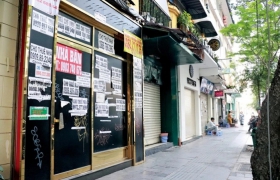


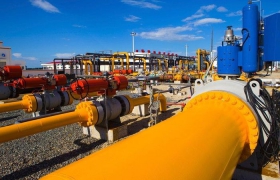




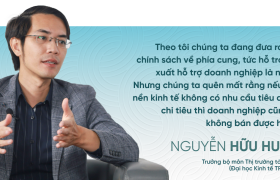
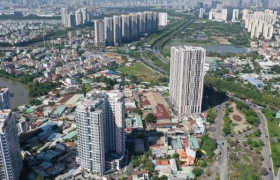
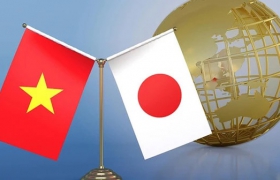

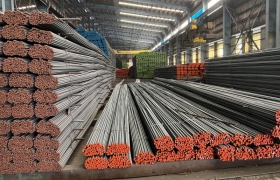







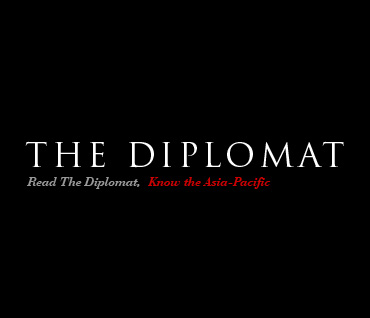

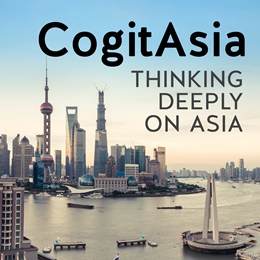





 Yahoo:
Yahoo: 